How to transplant a room violet?
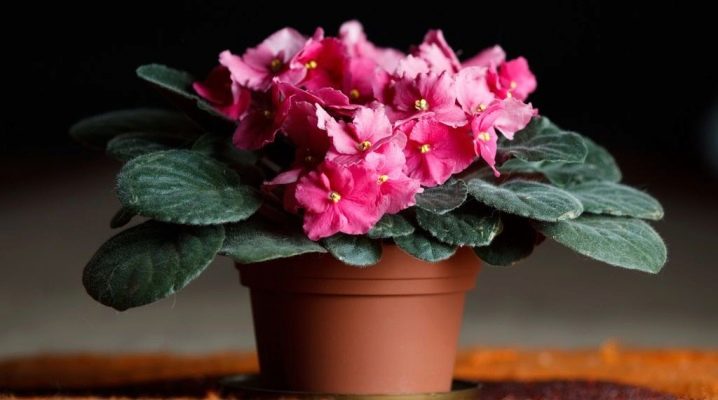
Saintpaulia is one of the most popular plants for home decoration - it is very beautiful and does not have high requirements in terms of maintenance. However, for successful development and, of course, abundant flowering, it must be transplanted on time, following a number of rules. It is worth mentioning right away that among gardeners, Saintpaulia is also known as the Usambara violet, so this name will most often appear below.
Causes
What a violet needs to be transplanted, a gardener can often determine by simply looking at the condition of the soil and the plant itself. For example, the appearance of a whitish layer on the surface of the earth indicates that the gardener has overdid it with the introduction of mineral fertilizers, and their concentration has exceeded the norm. Moreover, such soil is deprived of the required air permeability. As you might guess negative consequences for Saintpaulia will not keep you waiting, so it is better to transplant the plant.
Soil with high acidity and lack of nutrients is also a significant cause. The Uzambara violet also requires a transplant when, due to the drying of the lower leaves, the stem is bare in its lower part.
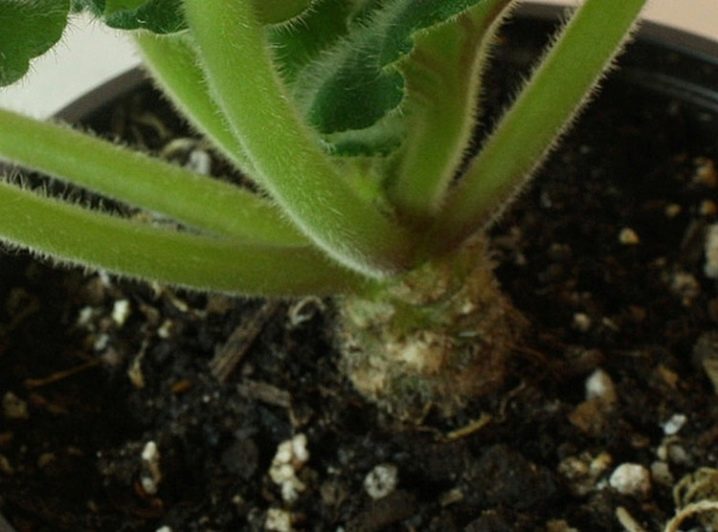
If the number of old roots has increased to such a state that the earthen coma is practically invisible, the Saintpaulia will need to be transported to a much larger pot. You can assess the availability of free space for roots by lifting the plant by the leaves and freeing it from the container.
An old violet with a long, and most importantly, bare trunk, must be transplanted, since the flower in this state does not receive enough nutrients. In a new place, an adult Saintpaulia is necessarily deepened.
During the process, the trunk will have to be cleaned of all leaves and cuttings, except for a few young rows at the top. The roots are shortened to a length suitable for the new pot.
The violet also needs a partial transplant when it needs to be shared with the young growth. However, we are talking here about the separation of young rosettes, the sheets of which have already reached the size of a ten-kopeck coin and have promulgated the growth point. In this case, the containers are taken of a small size - plastic cups with a volume of 80 to 100 milliliters will be enough. The soil mixture should be light, containing peat. An overgrown violet is easiest to transplant without children.
In any case, indoor flowers need to be transplanted annually for an overall improvement in development. Any soil begins to cake over time and lose important elements, so replacing a pot with soil is more likely a health and preventive procedure.
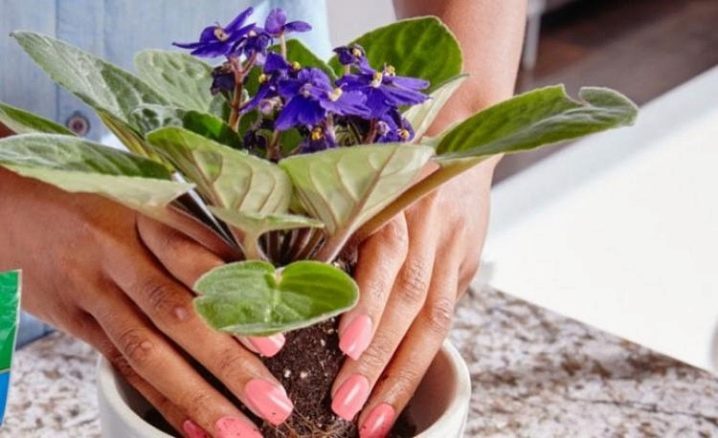
Transplant time
Experts do not recommend replanting the violet in summer or winter. In winter, there is too little light, and in summer the temperature is too high. A procedure carried out, for example, in December, will lead to the fact that the flower does not take root well, and then begins to experience flowering problems. The most favorable days for transplantation are May. It can be carried out in the fall, but in November there will already be a need for additional illumination in the format of special phyto-lamps or ordinary incandescent bulbs. Some growers also keep track of the lunar calendar and plan a transplant. to the growing moon.
The specifics of working with blooming saintpaulia is determined depending on the existing situation. If the plant is waiting for a planned annual transplant or the gardener is not satisfied with the size of the pot, then it is better do not do this during flowering, but wait until it ends. Since the emergence of buds and their opening is successful, it means that the plant feels good and may well wait for some more period.
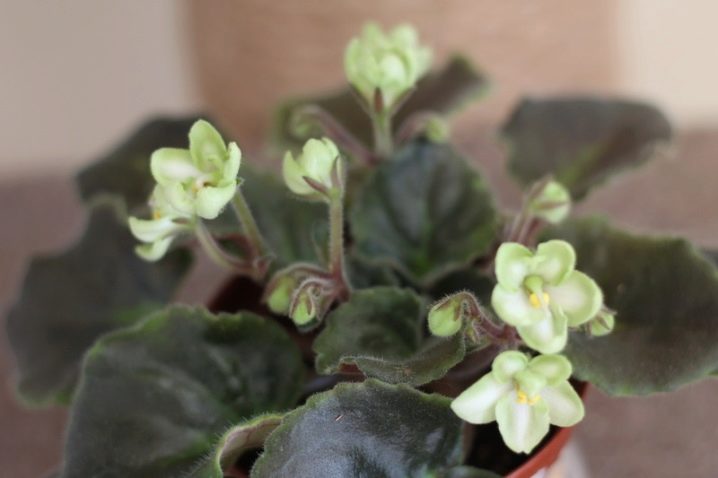
If the situation is critical, for example, the soil has acidified or the pests have multiplied, then you have to act immediately. Most likely, the flowering will stop, but the violet will be saved.
You will need to use the method of transshipment of an earthen coma, having previously cut off all the buds. The ground will need to be slightly moistened, avoiding liquid getting on the leaves. Many beginners are interested in whether it is allowed to transplant Saintpaulia immediately after purchase. There is no need for this, but the adaptation process is important. The purchased flower should be carefully examined and freed from dry flowers and damaged leaves. Unopened buds must be removed next.
The first days the violet does not even require watering or feeding - you will have to wait until the earth is completely dry. After that, the violet should be transferred to a pot of a suitable size and covered with cling film or polyethylene, creating a kind of greenhouse. This material can be removed in a week and a half.
Generally, transplanting after purchase is still necessary to create a more nutritious and useful soil mixture. At home, it is recommended to combine high-moor peat and a baking powder, for example, vermiculite. The resulting substance will be moderately loose and not excessively acidic.
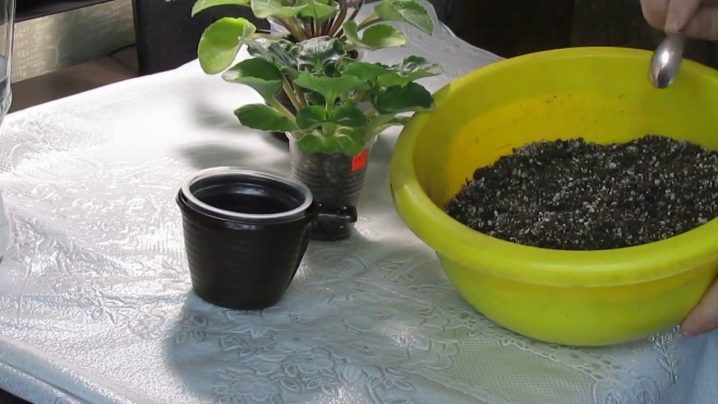
Selection of soil and pot
For the transplant to be successful, you will have to pick up a pot of the required size and fresh nutrient mixture. The soil is either purchased from a gardening store, or combined independently. The second option is best used when breeding rare varieties of Saintpaulia.
To create a soil mixture, you will need 2 parts of sod land, 1 part of sand, 1 part of humus and half of a part of turf. Add 30 grams of phosphate fertilizer and one teaspoon of bone meal immediately. After mixing the components, the soil must be sterilized by removing it for a couple of hours, calcining it in the oven or heating it in a water bath. The use of the mixture for transplantation is possible only on the fourth day.
If the mixture is purchased in a store, then it should be monitored that it has a low acidity and air structure, and is also loose. The optimal pot is made of plastic and exceeds the parameters of the previous one by 2-3 centimeters. Be sure to have holes in the bottom to get rid of excess moisture. When there is no opportunity to purchase another pot, then you should clean the one that has already been in use. The container is washed from salt deposits, and then treated with a manganese solution.
Having prepared the pot, small stones, expanded clay or clay fragments should be laid out on its bottom, forming a drainage layer. Experts advise to lay out vermiculite at the bottom, passing through which thin roots will not experience any difficulties. This is followed by a layer of clay shards or expanded clay - they are responsible for releasing water.
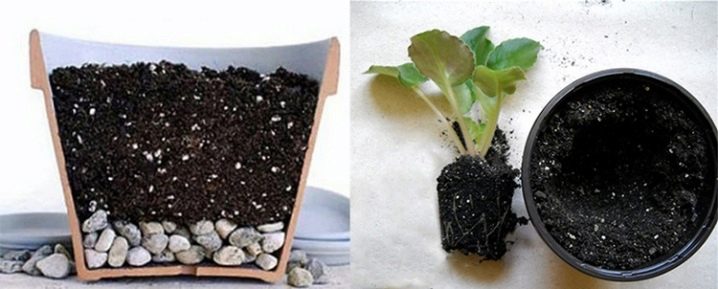
How to transplant correctly?
At home, transplanting a violet will turn out in two main ways: by transshipment or replacing the soil mixture, full or partial. In any case, it is important to follow the instructions step by step. About a week before transplanting, watering of Saintpaulia is reduced, which makes it possible to dry the roots and facilitate their transportation. Ideally, when transplanting, both the flowerpot and the soil for Saintpaulia change.
The process begins with the acquisition of a new container and a useful mixture for flowering indoor perennials, which, as already mentioned, can be made by hand.At this time, the violet is gradually being prepared for transplantation.
After completing the procedure, it is necessary to give the flower the opportunity to get used to the new conditions and provide full care.
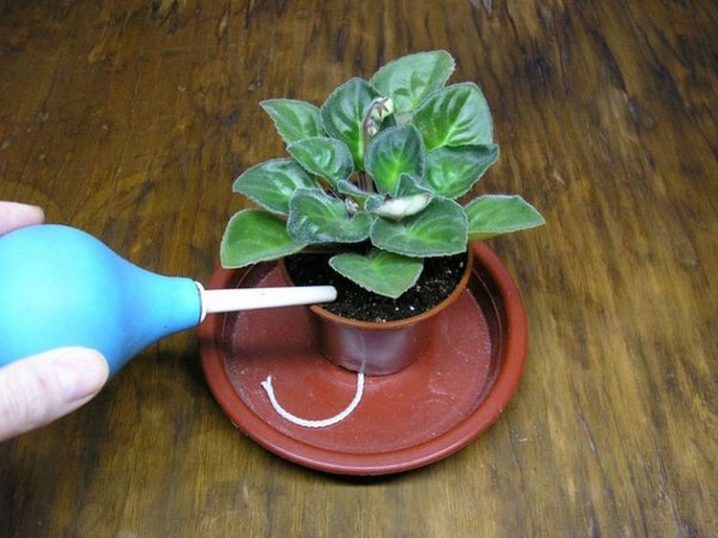
Transshipment
The transshipment method is mostly recommended for violets with a weak or incompletely formed root system. It is also used when young shoots first sprouted, and then suddenly began to die. Saintpaulia is removed from the container along with a lump of earth on the roots and simply transferred to a larger pot.
It is important to place the Saintpaulia so that the height of the earthen coma and the new soil coincide. The voids that have arisen in the flowerpot are filled with fresh earth.
Transfer is most often used either in emergency situations, or to separate young children and a heavily overgrown outlet. To simplify the procedure, you can use an interesting technique for using an old pot. First, a new larger container is filled with drainage and a small portion of fresh soil. Then the old pot is completely inserted there and lined up in the center.
The free space between the pots is filled with earth, and the walls are tapped for a quality seal. After that, the old pot is removed, and a violet with an earthen lump can be carefully placed in the resulting depression.

Replacing land
At home, it will be no less convenient to transplant a flower by replacing the soil. Change of soil mixture can be partial or complete. The first case is more suitable for miniature flowers. It is enough just to remove the top layer of the earth and fill up with fresh soil. There is no need to change the pot. With a complete replacement of the soil, it is primarily moistened with high quality using a spray bottle.
Next, the saintpaulia is taken by the outlet and taken out of the pot. Its roots will have to be carefully rinsed under the tap to clear of excess soil. The plant is dried naturally on a napkin for several minutes. If rotten or even dead parts are found on the roots, they will have to be removed. The places where the plant broke or where the roots were cut off must be treated with a crushed activated carbon tablet.
At the bottom of the container, a drainage layer is formed of pebbles and clay pieces, which is immediately sprinkled with soil mixture. The violet is neatly placed in a pot on a slide of earth, and all the free space is gradually filled with fresh earth. The ground level must reach the beginning of the outlet so that both it and part of the root system are on the surface. By the way, if a large number of roots were removed during transplantation, then the next pot should be taken no more, but even less by the whole size.
A complete soil replacement is chosen when the Saintpaulia has stops in development, the level of soil acidity has increased significantly, or the stem is bare.
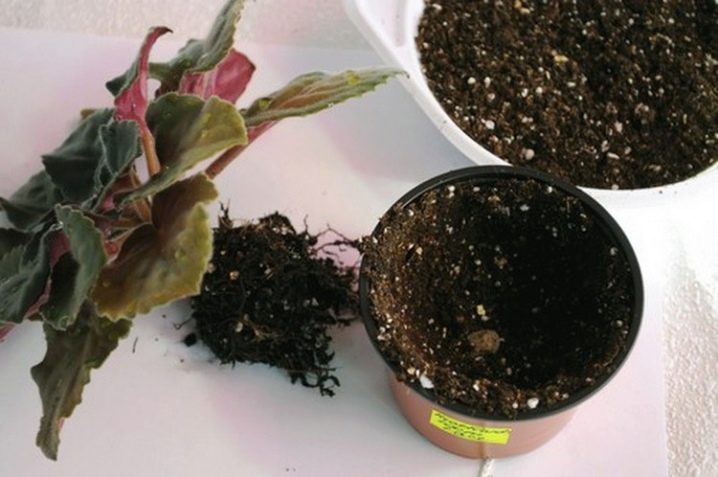
Follow-up care
After completing the transplant, it is important to make sure that the plant is firmly fixed in the container and does not tilt to one side. Then you can go directly to the care procedures. It is not necessary to water the violet immediately, since the soil is usually moistened before planting. If the soil is dry, then you can lightly irrigate it by adding about a couple of teaspoons. Ideally, watering is delayed for at least one day.
Experts advise placing the flower under a plastic bag, but do not forget about regular airing.
The temperature should correspond to 24 degrees, in addition, protection from direct sunlight is important. Having withstood a two-week quarantine, the violet is allowed to return to its usual habitat. If you do everything right, then Saintpaulia will bloom soon.
It makes sense to mention a few common transplant mistakes, especially those common to novice gardeners.
- The diameter of the container should not exceed 9 centimeters, and the soil mixture should be too dense and nutritious.You should not take land that was previously used in greenhouses or greenhouses, since it is highly likely that it is already infected with diseases and fungi, or is inhabited by pest larvae.
- The landing itself should not be either deep or high: in the first case, the roots rot, and in the second, the outlet deteriorates.
- Watering should be carried out exclusively at the root, since irrigation of the leaves leads to the death of the entire flower.
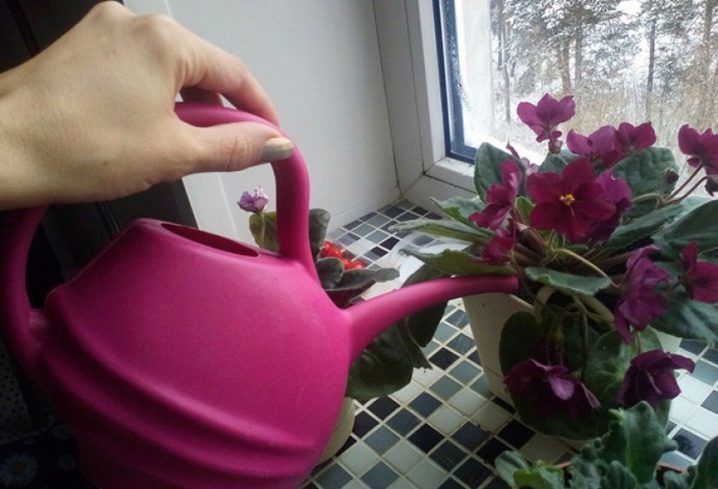































The comment was sent successfully.